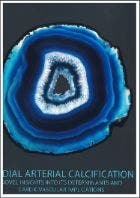Eva Hendriks
Medial arterial calcification: novel insights into its determinants and cardiovascular implications

- Date
- (Co-) Supervisors
- 28-03-2017
- prof.dr.ir. Y.T. van der Schouw, prof.dr. P.A. de Jong, dr.ir. J.W.J. Beulens
Summary
Background Arterial calcification is associated with an increased cardiovascular disease risk. Different layers of the arterial wall can become calcified. Calcification of the arterial intima occurs as an advanced stage of the atherosclerotic disease process. The arterial media and internal elastic lamina can calcify without adjacent atherosclerotic changes being present. This non-atherosclerotic calcification, referred to as “medial arterial calcification” (MAC), is mostly ignored in scientific literature, and studies on its risk factors and cardiovascular consequences are scarce. Objectives The objectives of this thesis are to study the risk factors for and risks associated with MAC, and to compare these to those of intimal arterial calcification (IAC). Underlying these objectives are the broader aims to determine whether MAC has clinically significant detrimental effects and to determine to what extent MAC differs from IAC with regards to its risk factor associations and clinical consequences. Methods As there is no established method for assessing MAC, we used different approaches to study MAC, namely studying vascular beds that are known to harbor a high MAC prevalence, studying high ankle brachial index (ABI) as a proxy for MAC, and studying MAC as defined by calcification pattern. Cross-sectional and longitudinal (cohort and case-cohort) study designs were used to study MAC in various study populations. Results Different proxies of MAC, including breast arterial calcification, high ABI and calcium annularity were associated with adverse (cardiovascular) outcomes. The risk factor profile that was associated with MAC differed from the traditional atherosclerotic risk factors. More specifically, smoking was associated with lower prevalences of MAC, age and diabetes were associated with higher prevalences of MAC and other traditional cardiovascular risk factors including hypertension and dyslipidemia did not show clear associations with MAC. Conclusions Along with prior research, findings in this thesis suggest that MAC is neither rare, nor an innocuous finding, as it is associated with increased cardiovascular disease risks. Furthermore, our results indicate that the risk factor profile associated with MAC differs from that of IAC. Discussion Future research should study MAC and IAC in concurrence, in order to determine the extent to which they are two distinct pathophysiological processes and to determine to which extent their cardiovascular consequences differ. Different methods of assessing calcification besides Agatston scoring should be explored in future research. Lastly, as arterial calcification is an actively regulated process with associated detrimental effects, it could form a potential therapeutic target in preventing cardiovascular disease, especially in heavily burdened patient populations such as those with diabetes or kidney disease.
